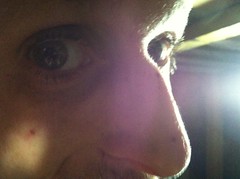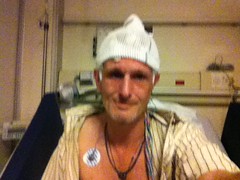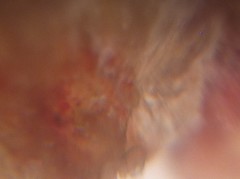Researchers identify gatekeeper neurons that control pain and itch
New research provides direct evidence for an influential model of pain first proposed in 1965.

During the 1960s, neuroscientists Ronald Melzack and Patrick Wall proposed an influential new theory of pain. At the time, researchers were struggling to explain the phenomenon. Some believed that specific nerve fibers carry pain signals up into the brain, while others argued that the pain signals are transmitted by intense firing of non-specific fibres.
Neither idea was entirely satisfactory, because they could not explain why spinal surgery often fails to abolish pain, why gentle touch and other innocuous stimuli can sometimes cause excruciating pain, or why intensely painful stimuli are not always experienced as such.
Melzack and Wall’s Gate Control Theory stated that inhibitory neurons in the spinal cord control the relay of pain signals into the brain. Despite having some holes in it, the theory provided a revolutionary new framework for understanding the neural basis of pain, and ushered in the modern era of pain research. Now, almost exactly 50 years after the publication of Melzack and Wall’s theory, European researchers provide direct evidence of gatekeeper cells that control the flow of pain and itch signals from the spinal cord to the brain.
The experience that we call “pain” is an extremely complex one that often involves emotional aspects. Researchers therefore distinguish it from nociception, the process by which the nervous system detects noxious stimuli. Nociception is mediated by primary sensory neurons, whose cell bodies are clumped together in the dorsal root ganglia that run alongside the spinal cord. Each has a single fibre that splits in two not far from the cell body, sending one branch out to the skin surface and the other into the spinal cord.
Nociceptive neurons have specialised receptors that are sensitive to hot or cold temperatures, painful mechanical stimuli, chemicals that are released from damaged cells, or some combination of these. Noxious stimuli like these trigger nociceptors to fire impulses into the spinal cord. Nociceptor fibres enter the dorsal horn of the spinal cord, where they form synaptic connections with second order sensory neurons that relay the signals to the brain’s pain centres, and with inhibitory interneurons, which form localised circuits that regulate the flow of the signals.
These interneurons constitute about one-third of all the cells in the dorsal horn, and synthesize the inhibitory neurotransmitters gamma-aminobutyric acid (GABA), glycine, or both. Earlier work had shown that blocking the activity of these cells causes exaggerated pain responses in mice, making them good candidates as the gatekeepers of pain. Yet, the circuits they form in the spinal cord are complex and poorly understood, and until recently there were no appropriate tools for examining them in detail.
Edmund Foster of the University of Zurich and his colleagues exploited recent advances in molecular biology to create a strain of mice carrying specially-designed genetic constructs in their glycine-expressing dorsal horn neurons. When shuttled into the cells by modified viruses, these constructs enabled the researchers to trace the connections of the cells, switch the cells on or off, monitor their activity or kill them off altogether.
The tracing experiments showed that the cells are mostly located in the deeper layers of the dorsal horn, and that they receive most of their inputs from primary sensory neurons that have a low stimulation threshold – that is, from cells that carry signals related to non-painful touch stimuli.
Foster and his colleagues then killed the glycine-producing cells to see what effect this would have on the animals’ behaviour. One of the constructs they created contained a fragment of the diphtheria toxin, so when some of the animals were injected with a virus carrying the rest of the toxin, the cells synthesize the complete diphtheria protein, which is lethal to them.
Experiments on slices of spinal cord tissue from these animals revealed that killing the cells significantly reduced inhibitory signalling in the dorsal horn. As a result, the mice became hypersensitive to mechanical, hot and cold stimuli, and to the itching induced by the injection of histamine or chloroquine, as measured by the amount of time they spent licking and biting the affected area of skin.
Another set of experiments confirmed these findings. Temporary silencing of the same cells in another group of mice produced the same pain- and itch-associated behaviours, but their re-activation one week later alleviated their hypersensitivity.
This strongly suggests that glycine-producing interneurons are a key component of a spinal gate that controls the relay of pain and itch signals. The story is probably more complicated, though. These cells are likely involved in other functions, such as the control of gait and posture, and a study published 2013 showed that excitatory spinal interneurons also contribute to the control of pain and itch. The new genetic tools developed by Foster and his colleagues should help researchers to get a better handle on how the different types of spinal interneurons co-operate to control pain and itch, and to learn more about the other functions of these cells.
References: Melzack, P. & Wall, P. D. (1965). Pain Mechanisms: A New Theory. Science, 150: 971-979 [PDF].
Foster, E., et al. (2015). Targeted Ablation, Silencing, and Activation Establish Glycinergic Dorsal Horn Neurons as Key Components of a Spinal Gate for Pain and Itch. Neuron, 85: 1289-1304 [PDF].











